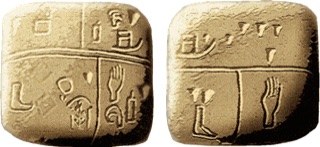
Some say computer scientist Alan Kay envisioned a KiddiComp; and developed the concept as a Dynabook in his invention.
A personal computer for children of all ages was developed in 1972 which outlines functionality similar to that supplied via a laptop computer, or (in some of its other incarnations a tablet or slate.
However, the written Chinese language is ideographic: that is, structured according to a system in which each symbol represents a particular idea or concept, whether abstract or concrete. That’s true of certain Chinese characters, but only a small minority. Most of them are actually logographs, each of which represents a word or part of a word. But if you dig deep enough into their history — and the history of other Asian languages that use Chinese-derived vocabulary — you’ll find that some started out long ago as pictographs, designed visually to represent the thing to which they referred.
That doesn’t hold true for Chinese alone: it appears, in fact, that all written languages began as forms of pictographic “proto-writing,” at least judging by the earliest texts currently known to man. If we look at the oldest of them all, the limestone “Kish tablet” unearthed from the site of the eponymous ancient Sumerian city in modern-day Iraq, we can in some sense “read” several of the symbols in its text, even five and a half millennia after it was written. “The writing on its surface is purely pictographic,” says the narrator of the brief IFLScience video below, “and represents a midpoint between proto-writing and the more sophisticated writing of the cuneiform.”
https://www.openculture.com/2024/11/behold-the-oldest-written-text-in-t…